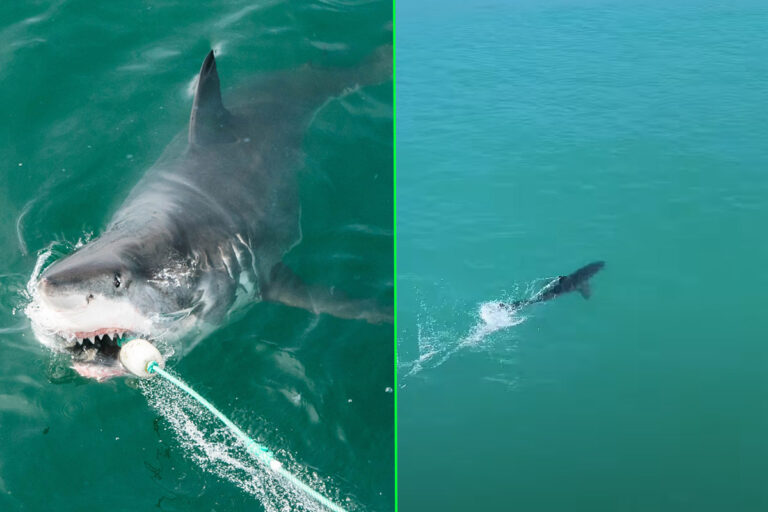Terrifying drone footage shows a great white shark swimming at 20 miles per hour
A drone has captured a great white shark swimming at top speed and the footage is actually terrifying.
Back in 2020, photographer Matt Larmand was doing some drone photography at Capo Beach, California when he captured the incredible footage and reckoned the creature was going at about 20 miles per hour (32.19 kilometres per hour).
In an interview with For The Win, Larmand told the news outlet, “He was going at least 20 miles per hour. I was going full throttle on the drone trying to catch up to him.”
After being informed of a shark sighting on the day the clip was taken, Larmand launched his drone in hope of capturing footage of the predator, and estimated it to be about eight to ten feet in length. A ten-foot shark going that fast? Yeah, no thanks.
Larmand was a little confused as to what caused the burst of speed. “I’m not sure what triggered him to burst into speed like that—I’ve never seen one do that,” he said. However, Chris Lowe of the Shark Lab at California State University believed that the animal’s speedy behaviour was prompted by the drone’s shadow.
“This response to the shadow of the drone supports one reason why they hang out in shallow waters. They don’t know what is a threat and the safest behaviour is to flee when they experience something unknown,” he explained.
“What’s also interesting is that babies will exhibit this rapid flight in one direction, while older sharks will do a loop around when scared. This doubling back on a potential threat is a typical predator behaviour to prevent a rear attack.”
First walking sharks, and now speedy sharks? One thing is for sure, I’m never getting in the water again. However, if you are still a shark fanatic after watching the spine-chilling video, you might also appreciate the work of TheMalibuArtist on YouTube. Why don’t you start with a compilation of the channel’s best clips of great white shark drone footage shot in 2021?





